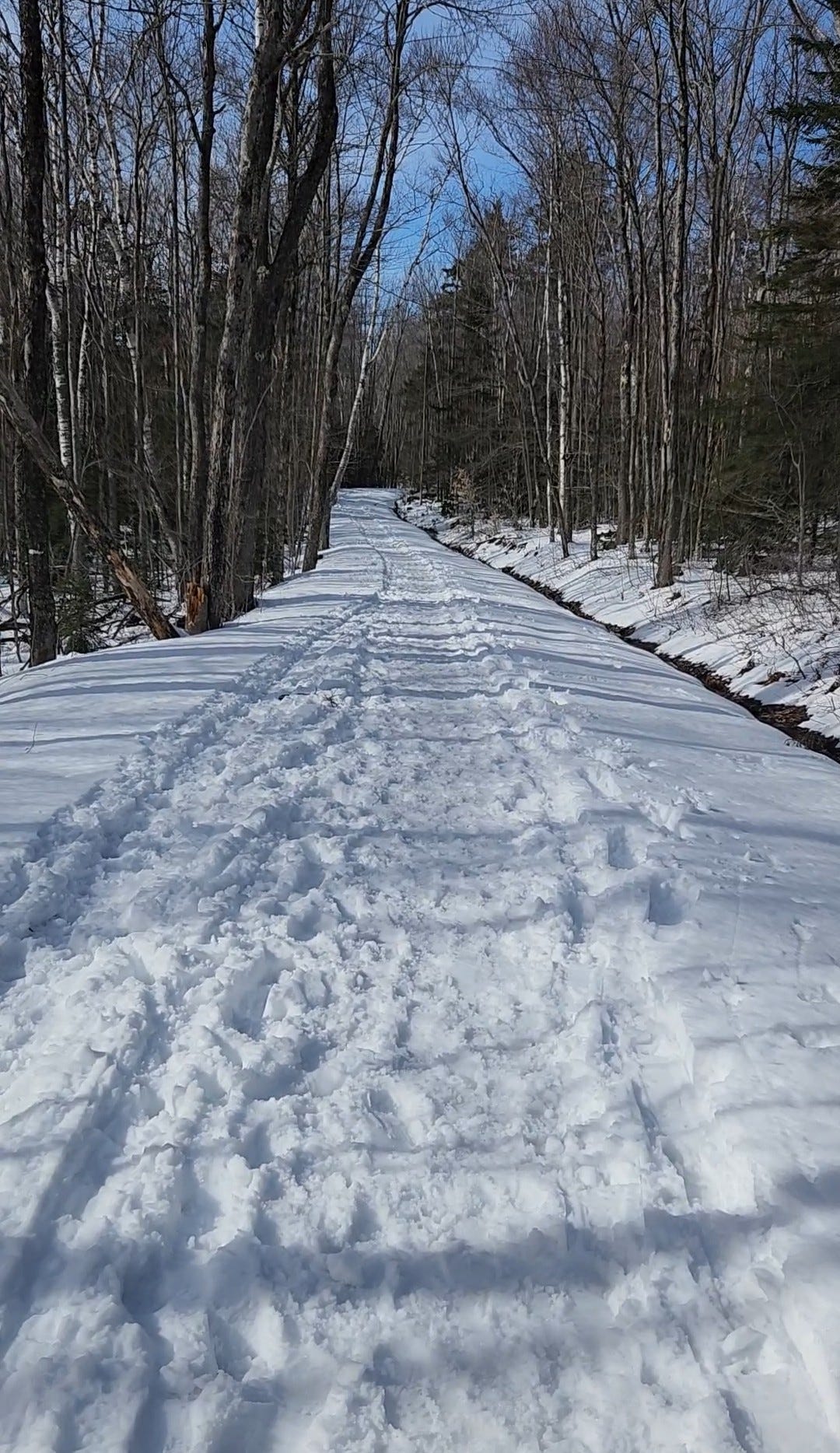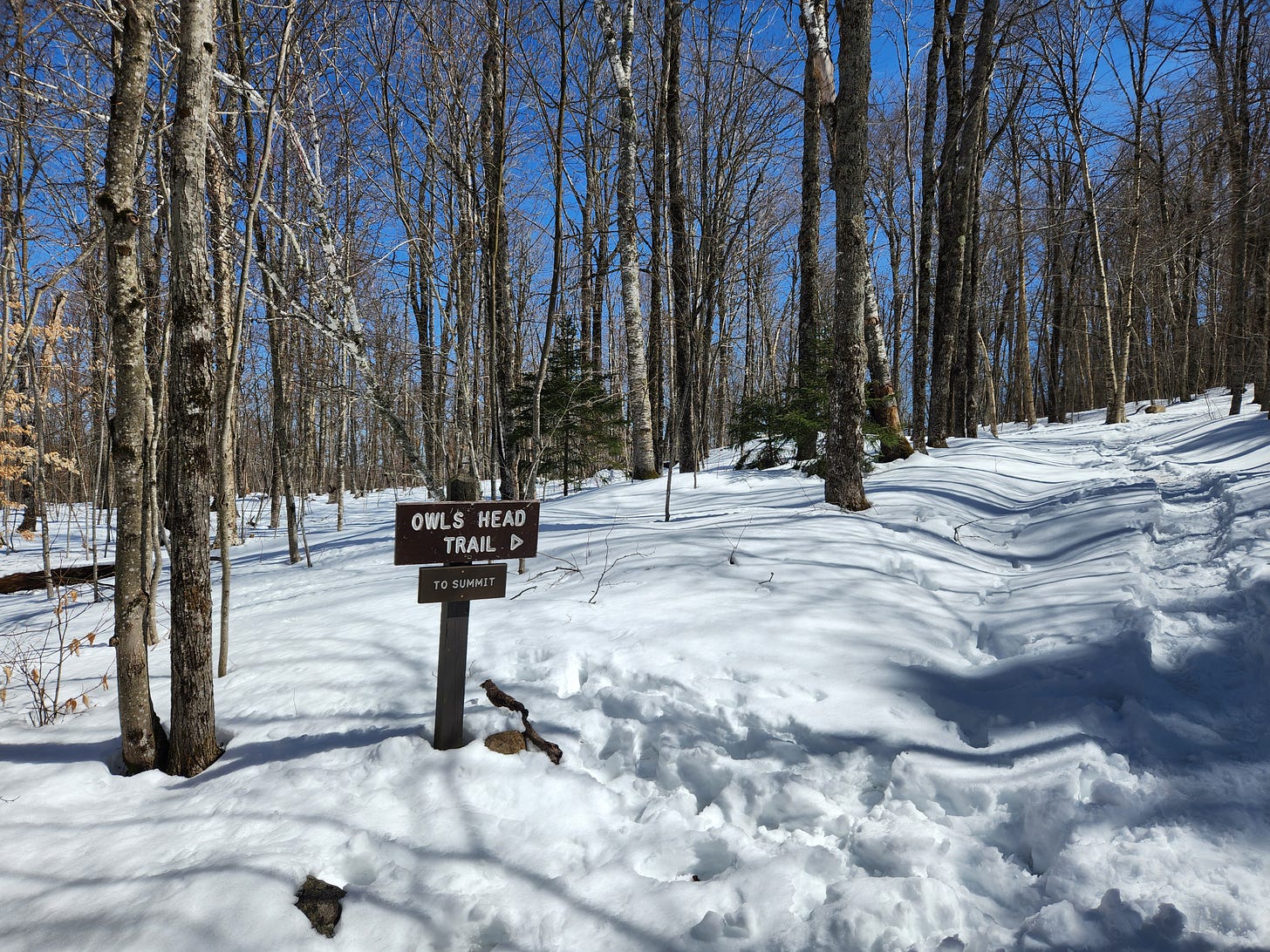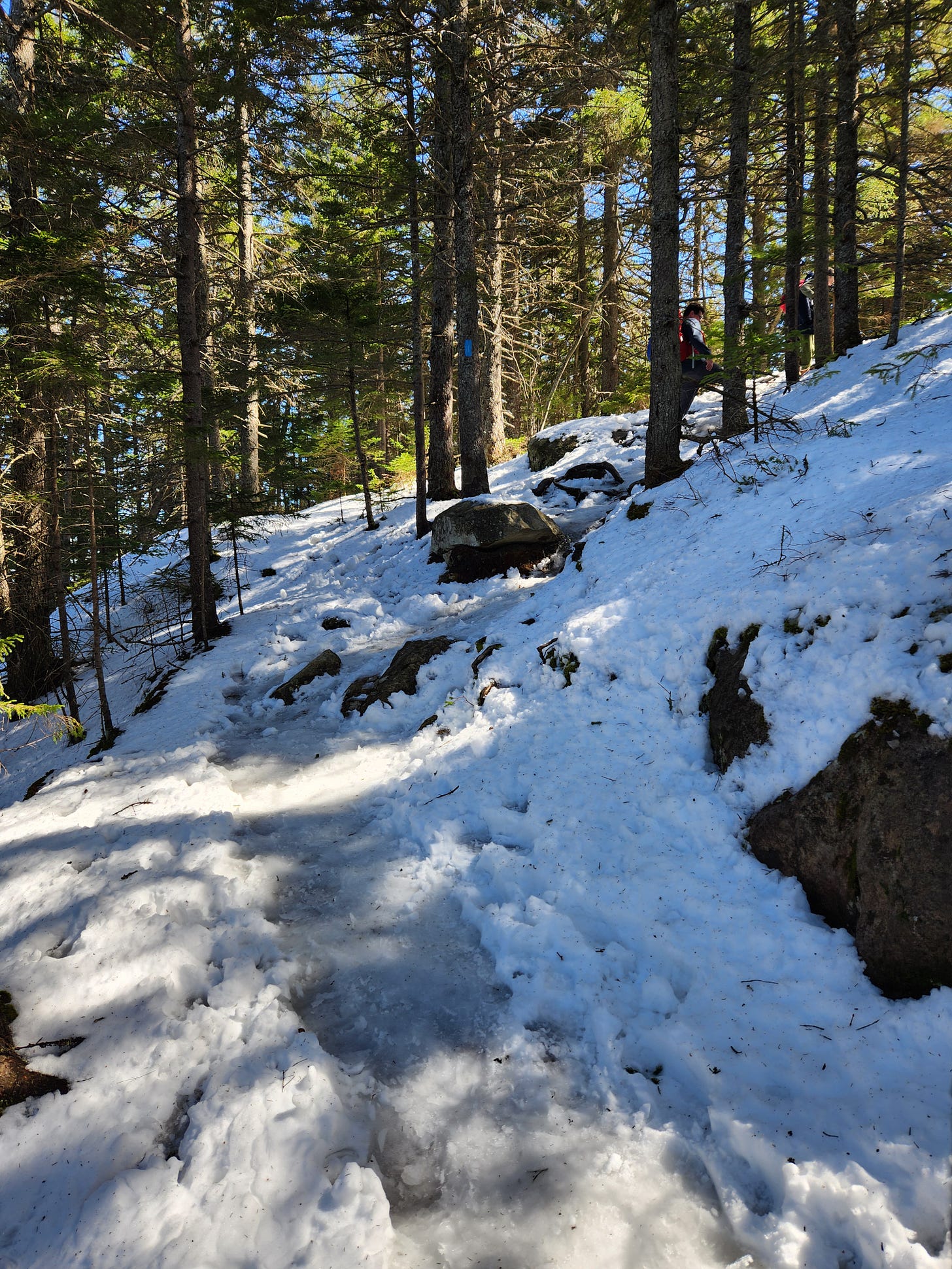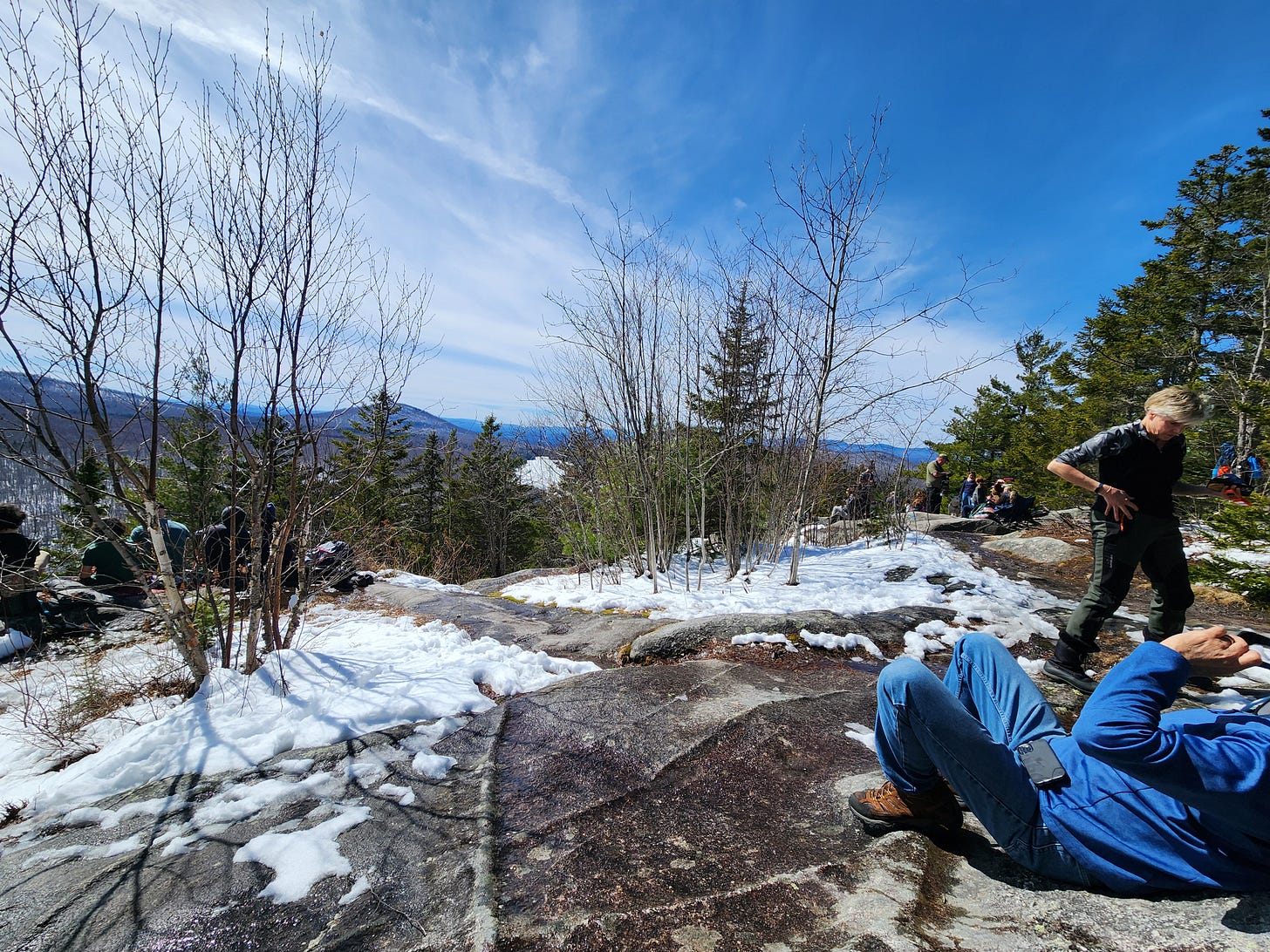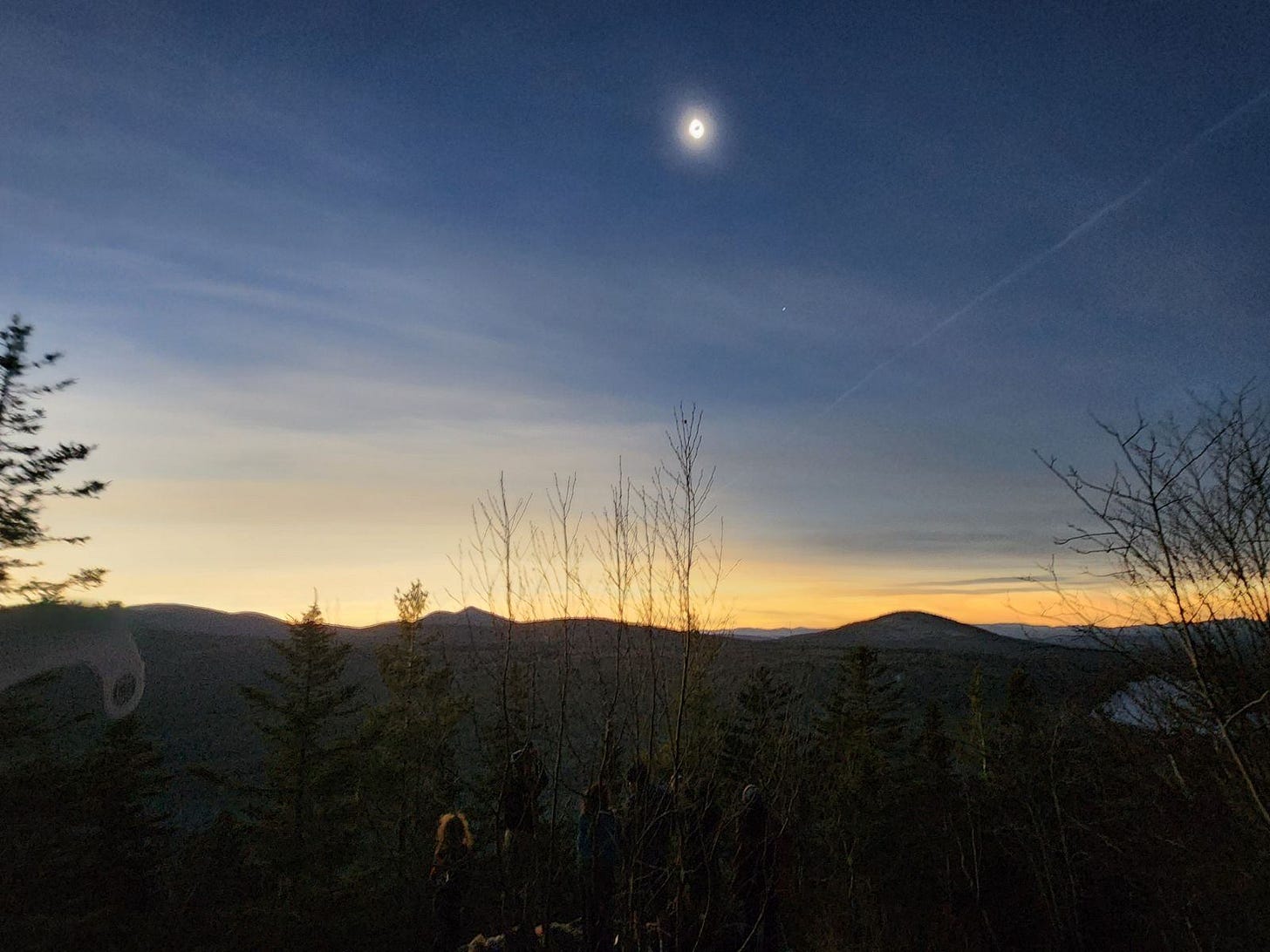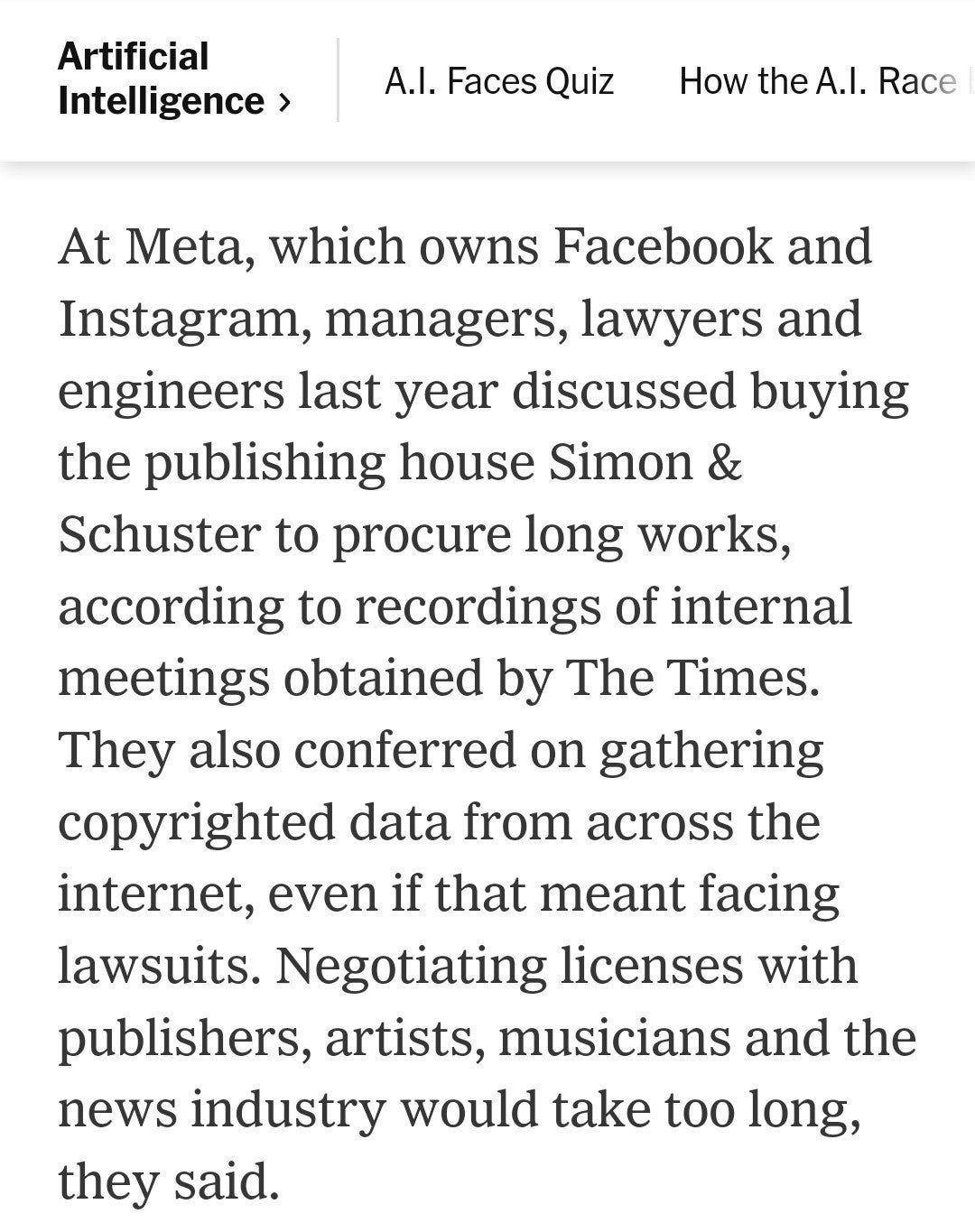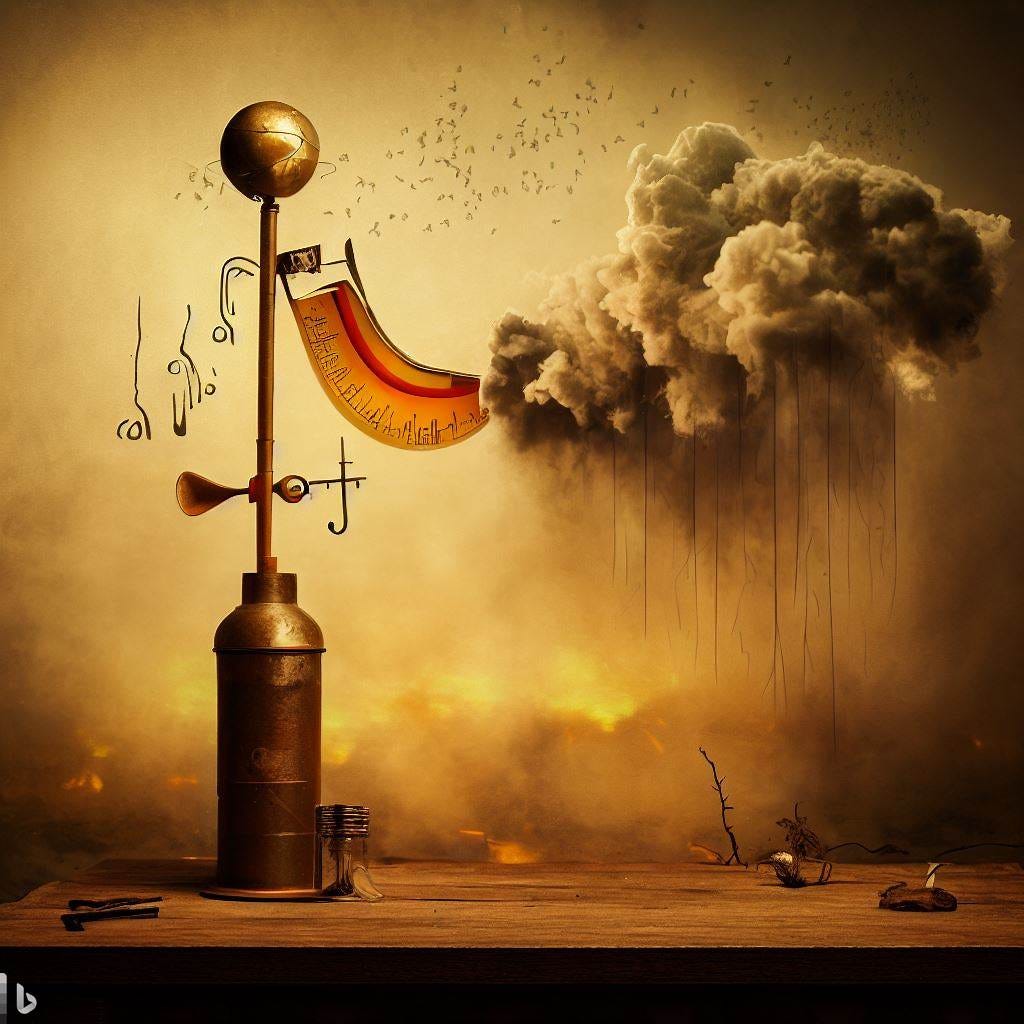Mind and Iron: The death and birth I saw at the Eclipse
The present craziness + the future of space tourism
Hi and welcome back to another dazzling episode of Mind and Iron. I'm Steve Zeitchik, veteran of The Washington Post and Los Angeles Times and lead umbraphile of this group of eclipse cultists.
We're coming at you a little earlier in the day than usual to catch some of the comet tail of the eclipse newscycle, an event I was lucky enough to experience from the path of totality Monday afternoon.
If you're someone who also experienced it, I don't have to tell you about the strong desire to reflect and share. If you didn't and have been subjected to someone in your life who has...we're sorry, we mean well.
Quick reminder that Mind and Iron tries to understand our future in its many dimensions, from the biggest company to the smallest startup, the most seminal discovery to the tiniest life-improvement. Please consider supporting our mission here.
Stargazing isn't strictly the stuff of the future — it's been happening for a little while. But it does fit our mandate because a) our goal is also to push the literal and figurative boundaries of understanding b) everyday people over the coming decade will increasingly be immersed in the cosmos, from space or in VR c) eclipse tourism itself is a trend — just ask all those tour operators now booking trips for places like Australia and Egypt. So we'll delve into Monday.
Also were been hearing for a while that ordinary ol’ consumers traipsing into space will soon be a reality. Two new companies are doing surprising things to make that happen. But we're not all about space this week — a shocking revelation about what Meta considered doing to feed its AI model. And did a machine intelligence just predict March Madness?
First, the future-world quote of the week.
“It's my birthday tomorrow!"
—The random adolescent who didn't quite know what to shout as he watched totality from a Vermont mountaintop (he could have done worse)
Let's get to the messy business of building the future.
IronSupplement
Everything you do — and don’t — need to know in future-world this week
The strange life-death cycle of an eclipse; space via hot-air balloon?; buy a publisher, solve your AI problems
1. “IT’S NOT ACTUALLY UP THIS LONG SNOWBOUND PATH, IS IT?”
"I guess we'll find out — we're not locals either."
You can forgive me for thinking they knew. This nice backpacked couple I encountered at the start of the unmarked trail off a remote Vermont road early Monday afternoon had fancy hiking boots, upscale backpacks and walking sticks for them and their children — a far cry from my own hideously unprepared flannel shirt and Jordans. (I did, however, wear a bear bell — Fozzie can find his own eclipse party!)
I set out ahead of them for the Owls Head Mountain summit, where I planned to watch the solar show. The decision to come here from where I was staying 45 minutes away (outside the path of totality) had not been arrived at easily. Several destinations were possible, including cities like Montpelier and Burlington and the smaller town of St. Johnsbury, site of a planetarium, who knew. A complex calculation attended in which I aimed to dodge both clouds and cars. Stressful.
I had no choice but to make it. I'd already flaunted my presence in totality's path to too many people back home. If I got stuck in the rare celestial occurrence of a Vermont traffic jam, just a cruel several miles from totality, I'd never hear the end of it from them or the FOMO monster within.
Plus I'd read all the essays about how perfect totality was, how much it enabled the great American virtue: boasting of your proficiency in something you learned about last week.
Ahead of me stretched a manageably wide path through the woods, sloshed in various depths of snow from a storm a few days earlier. It sloped uphill, into ever-thinner air.
More than a mile in I came across a young amateur photographer from Boston, Ziad, setting up on the side of the path. "Better hurry, partial starts in 15," he said. "I might want to slow down, or only a partial of me will make it," I responded.
Finally, two miles in, good news! A sign for Owls Head! Or two-thirds of good news. The last third was the word "trail." This was the start of the path up to the summit. I guess in normal times — in non-eclipse, non snow-in-April times — you could have driven to this point. I miss normal times.
The last half-mile was crazily steep, narrow and winding. Slippery, too. "Don't worry, we saw on Google Maps that there are stairs at the end!" one-half of the backpacked couple said cheerfully, passing me as I vacillated.
They were wrong. There weren't steps, just ice-covered boulders at irregular intervals that you might think about stepping on if you'd forgotten to take your anti-depressant that morning.
A Dartmouth professor had been the one to tip me off to this spot, a pristine summit that supposedly gazed out in all directions over north-central Vermont, so you could watch the diamond-ring of the sun blaze out over the same landscape it had for millennia. Even better, I could take backroads and avoid the interstate to get here.
As my Nikes sought tenuous purchase on every ice-covered incline mound, I found myself questioning my decision to listen to this professor. Then I remembered — he had said he'd be coming here too. At least I could dangle him off the edge when I arrived. It propelled me forward, heartened. I was now taking the boulders in single strides.
Going down would be another matter. I supposed I could sled, save for the pesky detail that I didn’t have one. There was always the…more natural approach? It would double as a snowbound science experiment, or at least a reddit forum. "r/can one get frostbite in their butt?"
Finally, I reached the summit. I came around a twist in the bend and the vista opened up beneath.
Several dozen people were already gathered. The vibe was easy as partiality unfolded — someone offered trivia about how an eclipse proved Einstein's Theory of Relativity, another person showed off photos capturing sun fractals on the ground, a third wondered if the two women he was dating back in Pennsylvania would unwittingly end up at the same eclipse party. (Hey I didn't vet this crowd.) There was a fair share of looking through glasses. But it was a detached experience; people were more focused on trying to get the right photo through their filter than contemplate what they were looking at.
Then things turned serious. And my skepticism melted away.
As totality approached — maybe about 15 minutes out — everyone grew quieter and more reflective. A chill was descending in the air with so much of the sun blocked, and it seemed to make people withdraw. With five minutes left the overcast light turned to something more dusky, and matters grew otherworldly. A purple twilight settled over the horizon and extended up the mountain. The whiteness of the snow began to recede.
"It's both brighter and darker at the same time," said one of my co-eclipsists, and I knew what she meant. The absence of light was palpable, but some of the new colors — the browns and oranges in addition to the purples — made everything feel sharper.
I'd read Annie Dillard's famous eclipse essay; I'd followed the writings of astronomers and eclipse-chasers. But what I’d seen none of them say — what seemed crucial to know — is that totality is a profound three-act structure. This was the first act.
With about a minute left things felt downright dystopian, isolating. The world was ending this Monday afternoon in April, and we on the mountaintop were simply the last people on Earth to accept it. We would have to soon, though.
The cold raced ahead, the glaring surfaces now darker, the hush of people and birds greater, like a hospital room where everybody knew what was coming but no one wanted to speak it.
With about twenty seconds until totality the sense of demise drenched us. People talk about a lot about what happens when totality strikes. But they don't talk about what immediately precedes that, the feeling of deep despair that stems from the convergence of sudden cold weather, animal stillness and the absence of recognizable light. The only conclusion it could lead to: death.
I felt pensive, I felt a little free, but mostly I felt despondent — I had so much left to do, and while I knew in a detached rational way there was still time to do it, the universe was looking at me and, with the force of an entire cosmos, telling me maybe there wasn't. I hung my head in deference to this force. Life was over.
A few seconds later: "There it is — the diamond ring," someone called out with glee.
And sure enough, as we all looked up, glasses-less, there was the sun covered entirely by the moon, only its corona visible. Though really it didn't seem like either of those celestial bodies. It simply felt like a new planet. Or maybe a signal from the divine — a spherical object in the sky with pointed white light jumping up and down like some kind of frequency, pulsing with meaning. I couldn't help feeling like the cosmos were communicating with me. "There is a very powerful message here, it's just up to you to figure out what it is."
Around me others seemed to be attempting the same decipherment. A few people were oohing and a couple others were narrating, but most were silent, trying to figure out what the heavens, in the throes of this new signal moment, were seeking to convey. (You can't see this level of corona detail in the photo, though the broader backdrop kinda comes through.)
The effect was both culminative of what had just happened but also negating; if we had just been through a death, this was the great light of the afterlife waiting to meet us.
The second act.
It hit me then why people rush from experiencing one totality to booking a trip to another — they want more information. Though this gives me pause; why seek more information when I’ve yet to figure out what this batch was trying to tell me?
And then, as I tried to make sense of or at the very least hang on to this message, totality was over, the throbbing blaze ended. I looked down and the brown-purple light began to recede. A few minutes later the sun and the light as we know it in this earthly realm started to come back, and with it normal bird sounds and the extant temperature. First we were taken from this earth, then we had been shown a great white cosmic light, and now just a couple minutes later we were being returned. "You have died, you have seen what's beyond, now go back into the world and do whatever you think is right with that knowledge."
A death, a white light and a rebirth. This was totality.
In much of our existence the cycles of life and death are an abstraction or, at most, an emotional reality — the joy of a birth or pain of a death of one close to us. These are experiences we cannot truly live firsthand; we are too young for the former and too late to do anything about the latter. And yet an eclipse, with this sudden plunge into the end and a lifting of the veil for a new beginning, is a chance to feel exactly that. For a moment I even found myself reflecting on whether someone close to me who had died was embedded up in that diamond ring, part of the cosmic message within. Maybe I'd been in the sun too long. Or maybe this celestial crossing of the streams really did contain that kind of power.
A friend who also witnessed totality (playing hookie from her teaching job in New York City) said she had seen an “old-fashioned miracle.” But it felt to me less like a Biblical throwback than a progressive glimpse. This is where we are all headed. Now return to the world knowing that.
What I think is hardest to describe (though that doesn't stop many of us from trying) is that totality isn't something you see or experience so much as live — and really it's not even so much that as that which lives inside you. The next day I would take a stab at conveying this when, talking to another friend, also a journalist, I described what happened this way: "Picture someone plucking you from your home and dropping you on another planet, then just as quickly bringing you back again."
For those of us etched with Jodie Foster's journey/dream at the end of "Contact,” in which her skeptic stargazer may or may not have visited another planet and seen her late father, this is a good touchstone; ditto anyone who's steeped themselves in near-death experiences, whose literature suggests a similar progression. This idea of being taken not only out of your routine but out of your consciousness and dropped in a new one, only to be quickly returned whence you came, is the best way I can describe how this feels.
And it can’t but change you. Sure, you can go on and just file away the experience as one more cool thing you did, a Pyramids tour for space buffs. But even the greatest sightseeing moments are at heart discrete experiences you have a strong memory of, not a rewiring of your fundamental concept of existence.
That's another reason I think umbraphiles find themselves chasing the dragon of totality. They are pursuing not just a fun reprisal but a way to transport themselves anew. Having seen another way of experiencing the world, they (I guess now we) are impelled by the human instinct for self-understanding to keep learning more, to keep finding out what we realize has been sheltered from us. It is not just a chance for a person to view a cool thing again. It is a chance to re-evaluate the very nature of what it means to be a person doing the viewing.
Technology in the coming years will give us ever-greater glimpses into other realms, whether of outer space or an afterlife. Just before Monday's spectacle I read about how Laurie Anderson has become obsessed with using a chatbot to resurrect her late husband Lou Reed. The desire to transcend our earthly shackles runs deep.
Somehow, thanks to an eclipse, I was able to do this for 90 seconds on a Vermont mountaintop. Just don't ask how I got down.
2. IF YOU APPRECIATED GAZING UP THIS WEEK AT SPACE FROM HERE ON EARTH, A NATURAL QUESTION ARISES: MAYBE WE CAN SOON GAZE UPON EARTH FROM UP IN SPACE?
Like, what is the timing here? When does space tourism take off? Will we casually launch ourselves into the thermosphere over the next few years? In our lifetimes? Our children's lifetimes?
There's Blue Origin or SpaceX or Virgin Galactic, of course, where all you need is half a million lying around and some special status to get on a years-long wait-list. Also, you need to be OK being thrust off this earth at three times the speed of sound. (Shades of that "Modern Family" line: "You know the scariest part of a roller coaster? It's a month of that!")
But two companies right now are trying to find an easier way. The startups, Space Perspective and World View, are building capsules that will lift into space using…helium. Yep, the stuff of balloons and gag inhalations. The cost is a (slightly) more reasonable $50,000-125,000 depending who you fly with (/what your life-insurance company has to say about it).
The idea can sound like someone watched "Up" while smoking too many Luxo Balls. These firms aim to use that lighter-than-light gas to lift a craft into the sky, where customers can recline in spacious chairs and sip champagne. The target altitude is 100,000 feet, or about 19 miles.
That's technically not space — space begins at 50-60 miles — though it's solidly in what scientists term "near space" (12 miles). Or, you’re above the troposphere but still in the stratosphere. Space Perspective’s flights are also touted as carbon-neutral.
"No rockets. No g-forces. Experience a gentle, meticulously crafted spaceflight in our one-of-a-kind Space Lounge during your six-hour journey, complete with meal and cocktails," the company says, noting that liftoff occurs at 12 miles-per-hour.
The science, the company says, is sound —"propelled by a SpaceBalloon, a technology used for decades by the likes of NASA." (NASA sends balloons into space to carry equipment.) A parachute backup system is in place if something goes wrong.
Cost-effectiveness remains a question, or what you might call the scale-price Catch-22 — to scale something like this you need it to be cheaper, but to get it cheaper you need to scale it. And there are regulatory hurdles ahead — the FAA has yet to certify manned flights of this sort. (There’s a whole space-hotel niche too, but one Carl Fredericksen moment at a time.)
Still, these companies’ bona fides are real — Space Perspective is run by Jane Poynter and Taber MacCallum, the space-entrepreneur power couple who was heavily involved in the earth-based research center Biosphere 2 and themselves founded World View before breaking away. They recently announced that the Space Perspective test capsule was complete, and that test flights (sans crew) will soon launch from Florida’s Space Coast.
Plus if the big companies are packing civilians onto suborbital rocket systems, a helium flight at least seems plausible.
So we'll see where all this goes. But wherever the solutions come from, the future of space tourism may not be as far away as we think. Judging by the experience so many of us had this week, that's hardly a bad thing.
3. PRESENTED WITHOUT COMMENT, the below tidbit in the New York Times investigation into how some AI companies were hoping to skirt copyright law.
We knew how a certain type of Big Tech executive regarded art and media. Did we understand just how little esteem they have for it though? Forget turning art into a commodity — now it's just an afterthought investment in a lawsuit-avoidance mechanism.
More on the state of play on AI copyright, which we haven't dipped into in a while, in a future episode.
4. FINALLY, IT’S TIME TO MAKE OUR LAST TRIP OF THE YEAR TO AI MARCH MADNESS.
When we last checked in with our handy friend Mr. AI Bracket he was coming in pretty...ordinary. With 72 points, he was sitting in 15th place. Half the 31-person pool in which I was scoring his men’s basketball bracket had more points than him; the other half had fewer. He also had about the same number of correct teams (10 of 16) as others in the middle of the pack.
That was after the Sweet 16. How did he fare now that the whole shebang is done?
Well, he ended up with 126 points, good enough to be tied for sixth place. That's some strong improvement over where he was two rounds in.
But before I'd give him too much credit, his last burst of points came from choosing UConn to win it all — hardly a prediction that one needed a machine intelligence for. (The Huskies were the No. 1 overall seed and the prohibitive favorite from the start.) His other correct Final Four pick was Purdue. Also not very unconventional. The two Final Four teams that were harder to pick for the Final Four — No. 4 Alabama and No. 11 NC State — he had going out in the third and second rounds respectively.
Now, the humans didn't do so great with that last part either — only two of 31 people in my pool had Alabama in the Final Four and zero of 31 had NC State. But if the point of using AI is because it can see what the humans can't, well it failed that test.
My goal with this experiment was to see whether a set of outcomes overflowing with variables — something humans struggle to predict, relying too much on intuition and heuristics — could be forecast better by a machine intelligence. By this standard, the AI both performed impressively and utterly flopped. The impressive part came with the fact that it did its job very respectably. If you were submitting a sheet and were hoping for a decent score, the AI would have helped, putting you in the standings’ top 25 percent. (Assuming no one else was using AI.)
But if you wanted it to do something humans couldn't, see what we couldn't see, you were out of luck. My pool is mostly ordinary duffers; they're not basketball savants. And yet six people could predict the tournament as well or better than an AI could.
Now, maybe its results would improve if the AI was customized specifically to my rules or fed with particular pieces of data that didn't currently enter its maw. And models get refined as the AI learns from its mistakes. But when it comes to the market-like conditions of March Madness, the notion that machines can see something we don't is, for the moment, still a clang off the iron.
The Mind and Iron Totally Scientific Apocalypse Score
Every week we bring you the TSAS — the TOTALLY SCIENTIFIC APOCALYPSE SCORE (tm). It’s a barometer of the biggest future-world news of the week, from a sink-to-our-doom -5 or -6 to a life-is-great +5 or +6 the other way. Last year ended with a score of -21.5 — gulp. Can 2024 do better? Well this week is looking pretty bright.
AN ECLIPSE SHOWS US A GLIMPSE OF THE BEYOND: +4.5
SPACE TOURISM IS TAKING SOME DEMOCRATIZING LEAPS FORWARD: +3
META TRIES TO BUY ITS WAY OUT OF COPYRIGHT PROTECTIONS: -2
THE HUMANS STILL WIN AT SPORTS PREDICTIONS: +1.5





